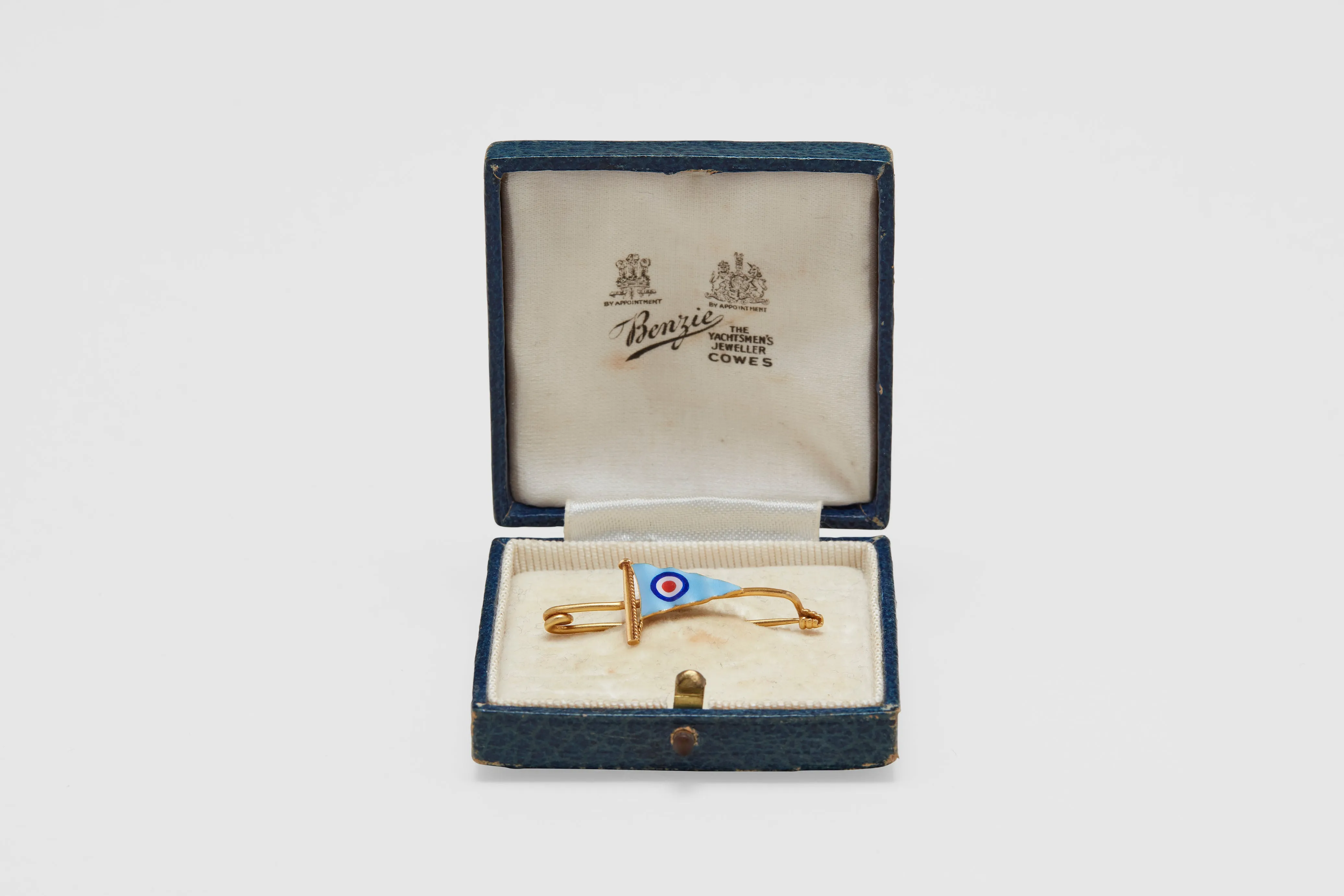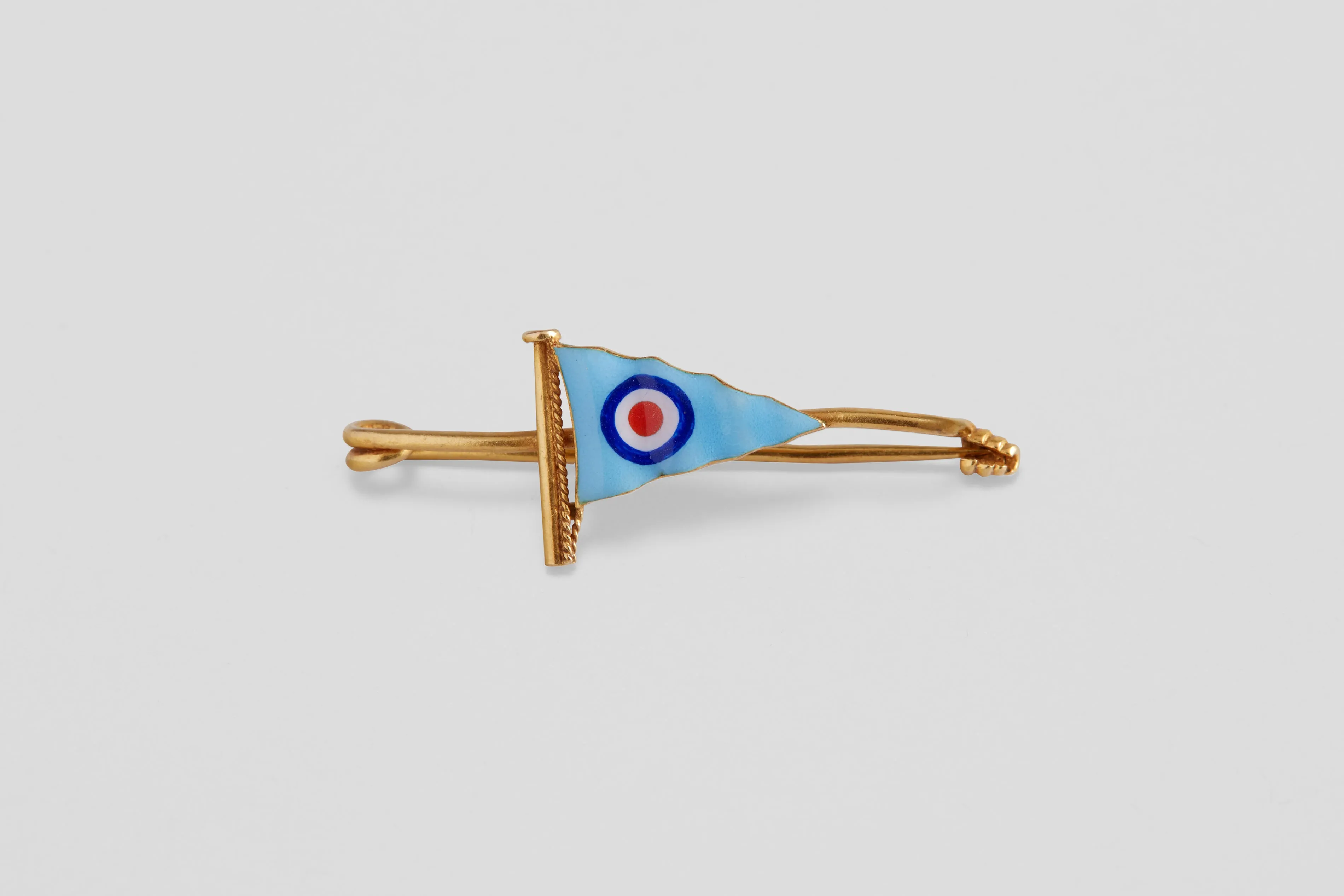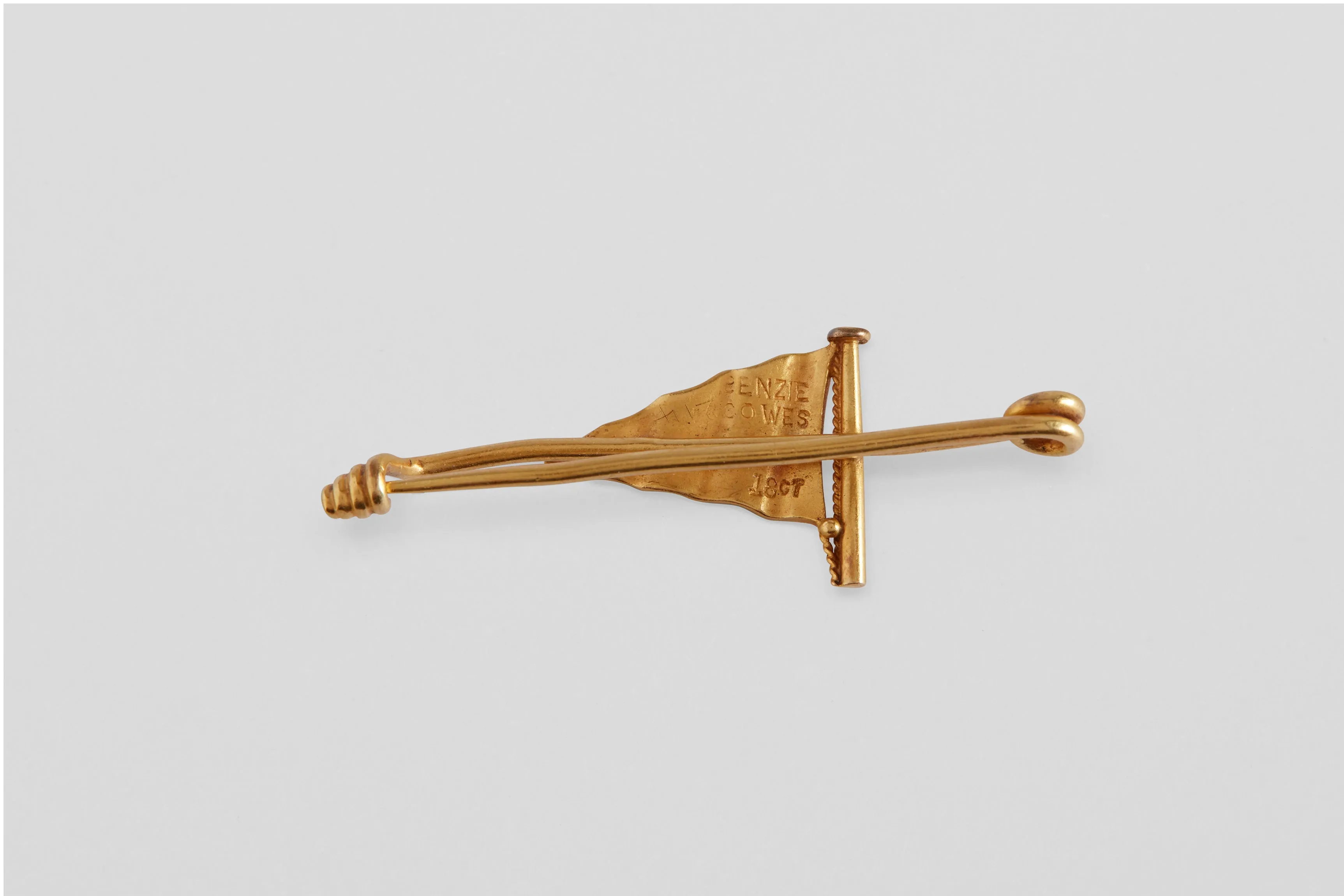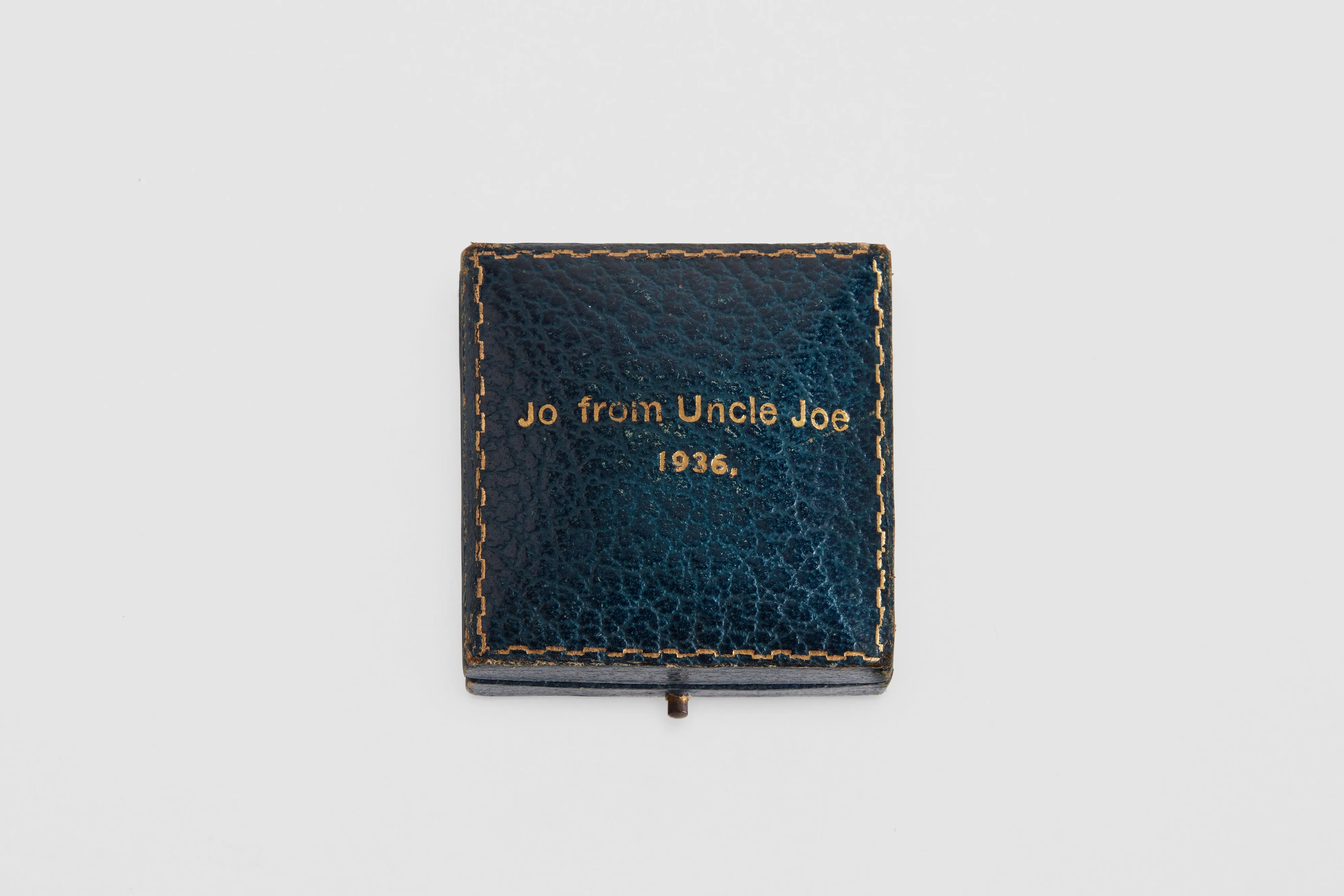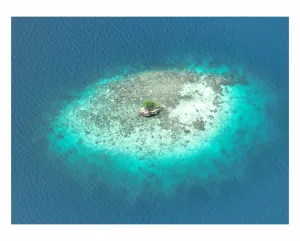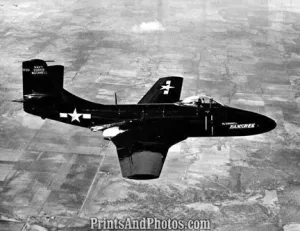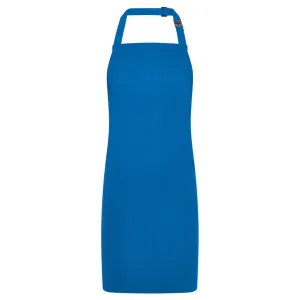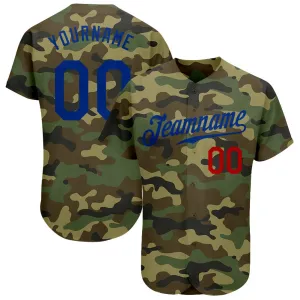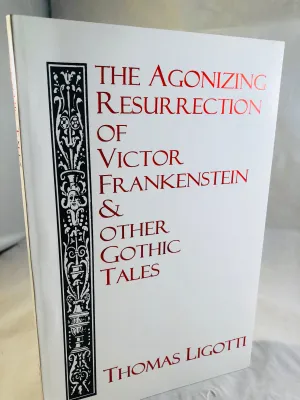A solid eighteen carat gold flag pin, or brooch, featuring a beautifully hand painted vitreous enameled yacht burgee flag. The yacht club burgee flag is a unique flag that represents each yacht club across the world, and is flown by members of the club's on their yachts. The hand painted flag in this case is from the Royal Air Force Yacht Club.
In the 1930’s Calshot, at the entrance to Southampton Water, was an RAF Flying Boat Unit. The officers sailed a few National 14 dinghies, and some yacht owners had moorings on Ower Creek. This loose gathering of enthusiastic sailors became the embryo of the club today. The Commander-In-Chief, Coastal Command agreed to formalise the sailing group, and the title Royal Air Force Yacht Club was granted.
At the inaugural meeting, Calshot Station Commander, Group Captain H R Nicholl CBE, was elected the first Commodore and the annual subscription was set at £1. A room in Calshot Castle was used as the headquarters. Subsequently, two wooden huts on the foreshore were acquired. The Club and members’ yachts were moored in the creek, and dinghies were ‘parked’ on a flying boat slipway. Members enjoyed many happy sailing adventures until the onset of WW2, when the club was, out of necessity, disbanded.
In 1947 at the Royal Air Force Club in Piccadilly, the few original surviving members met, and Air Marshal Sir Arthur Conningham was elected Commodore. The Air Ministry presented him with the contents of the ‘Wings Club”, which had been established for wartime airmen visiting London. The furniture was moved to the two huts on the foreshore at Calshot, reclaimed by the Club Secretary, now Group Captain AM Carey.
The Club was in business once again, and one of the first tasks was to bring back the Windfall yachts from Germany; these prizes of war, had been built, for use by the members of the Luftwaffe. The whole fleet was sailed back to the UK by the three services, with the RAFYC having responsibility for the RAF allocation to Calshot.
During the next few years, little thought was given to development of the Club, and membership was static until Group Captain E F Haylock (Retd), the editor of Yachting World, became Commodore in 1951. He persuaded the Committee that the Club would always struggle to develop at Calshot, and would need to move to a more accessible location to succeed. Many schemes were mooted but, by chance, he heard that Riverside House had been purchased by Port Hamble to enable it to increase its foreshore holdings.
The 100-year old building stood in 3 acres of ground, stretching down to the river. It was empty, in a bad state of repair and needed much attention. An approach was made to the directors of Port Hamble who were prepared to sell for £20,000. However, Group Captain Haylock was the essence of persuasion and he reached agreement to buy the whole property for £6000!
Further persuasion convinced Air Marshal Sir Leslie Hollingworth that the Royal Air Force should have a clubhouse and facilities to rival other Service Yacht Clubs. The Chief of the Air Staff, Air Chief Marshal Sir John Slessor, agreed and authorised a long-term loan. Extra expenses and legal fees of £1000 arose; however, a generous RAFYC member, H S Whiteside, (who owned ‘Skaggerack’, a 100 ton yacht built for Goering) settled these bills.
On 10th of May 1952, Sir John Slessor opened Riverside House. It proved to be popular! Membership increased, and RAF Calshot donated one of the original huts to assist with providing much needed extra space. In later years Riverside House itself has been extended.
From these early days, the club now warmly welcomes non-service members who continue to support the Club’s development, most recently in 2015, with the development of walk-ashore moorings within the Prince Philip Yacht Haven.
This particular pin was made by Benzie of Cowes. Founded in 1862 by Simpson Benzie, on the Isle of Cowes, it was a specialist in nautical themed jewellery of the highest quality. Alongside this, Mr. Benzie kept the "Benzie Ball" atop the shop which was, for many years, the chief time-keeper for the Royal Navy in the Eastern Solent. At various times during its illustrious history it has held no fewer than eight Royal Warrants. A Benzie clock hung on a bulkhead on the Royal Yacht, Britannia. Made in Birmingham, England, 1924. The maker is stamped 'Benzie' can be found on the back of each panel, along with an English hallmark for London and the date letter for having been made in 2006. There is also a unique Benzie reference number on the back of each.
This fabulous pin is in superb original condition with no real signs of even having been used. The original box is present from Benzie, and has a charming gilt foiled presentation on the lid; "Jo from Uncle Joe 1936". Having obsereved the hisoty of the yacht club, this would have been one of the very first founding members before the outbreak of the Second World War. A stunning piece of history, and a very rare one at that. Items like this were comissioned

